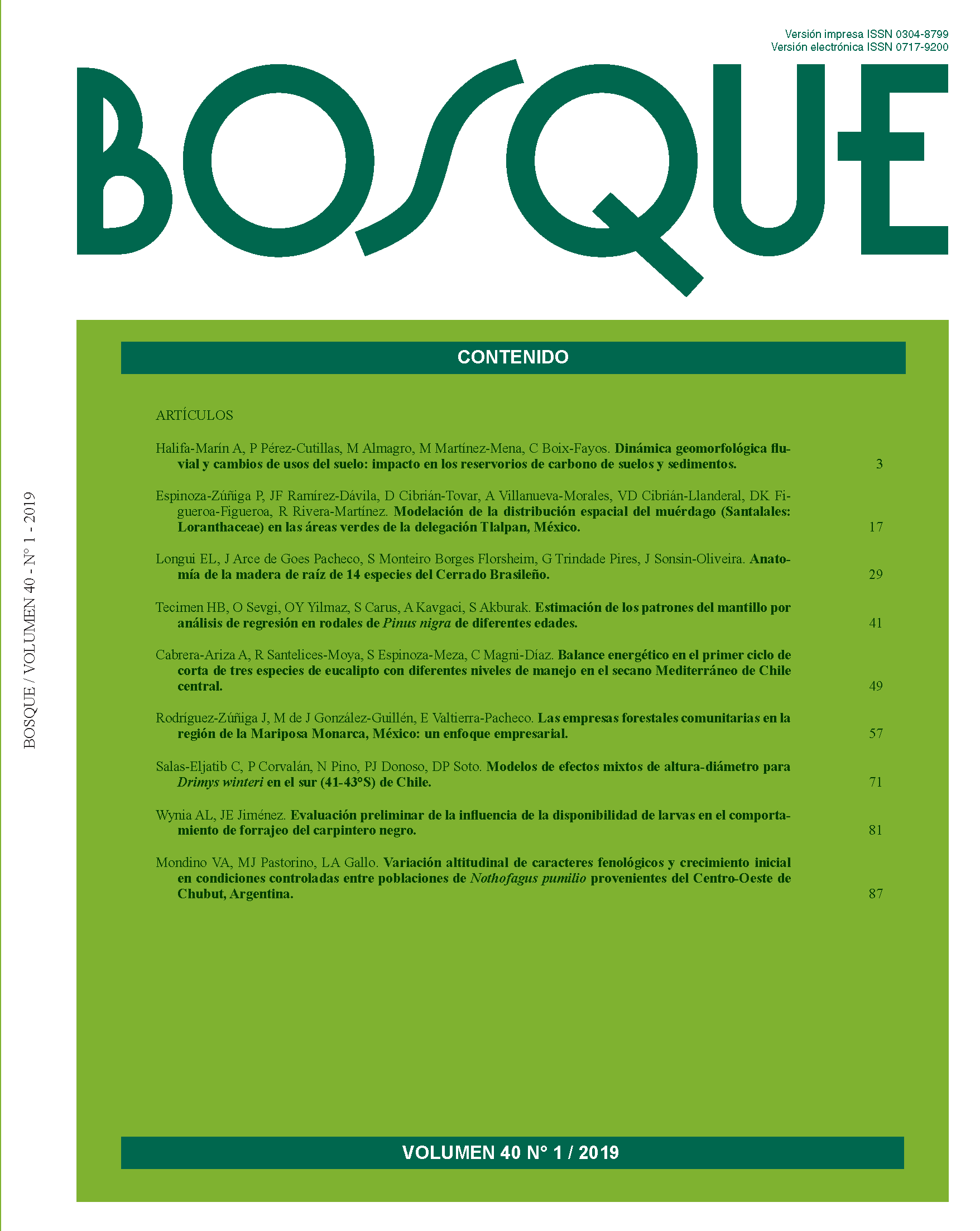Estimación de los patrones del mantillo por análisis de regresión en rodales de Pinus nigra de diferentes edades
Contenido principal del artículo
Resumen
Los patrones de acumulación del mantillo posiblemente se pueden predecir por ciertos parámetros del árbol y rodal para evaluar cómo los bosques manejados por diferentes métodos acumulan carbono. El objetivo de este estudio fue usar datos de parcelas de árboles para refinar métodos que predicen la composición de los tamaños de fragmentos del mantillo en bosques templados semi-húmedos de pino negro (Pinus nigra) en el occidente de Anatolia, Turquía. Se establecieron modelos predictivos entre los componentes del mantillo (fragmentos finos de <2, 2–4 y >4 mm y detrito leñoso grueso de ramas de <5 cm, >5 cm, piña y corteza) y parámetros de los árboles (edad, altura, dap, área basal, densidad, altura del comienzo de copa y su diámetro). Se muestrearon 105 parcelas (edades <50, 50-100, >100 años) distribuidas en cinco altitudes (500-1.750 m). Mediante análisis de multiregresión se estimaron las cantidades de los componentes del mantillo. El mantillo varió de 18 a 213 Mg/ha (promedio: 94 Mg/ha). Los fragmentos finos (>4 mm) representaron la mayor proporción (36 %). El detrito leñoso grueso representó 6,6-7,8 %; las ramas <5 cm fueron la mayor proporción de este componente (12,4-26,4 %). Las variables más influyentes para predecir las proporciones de los componentes del mantillo incluyeron el grosor de las ramas secas, tasa de raleo, altura y edad. La combinación de las observaciones de largo plazo y los métodos de captura del detrito fino y grueso deben mejorar las tasas de estimación del carbono secuestrado en los ecosistemas forestales.

